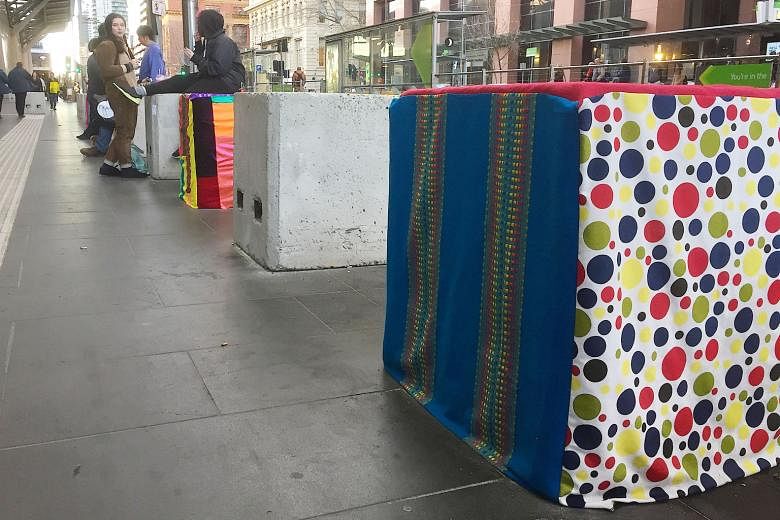A plan released in Australia this week for preventing terrorist attacks at public places has been welcomed as a breakthrough after it proposed detailed measures such as checking air-conditioning ducts to prevent gases being released and removing unused furniture that can be used as hiding spots.
The measures, recommended to owners and operators of public places and events, include installing crash-tested barriers and security fences to prevent vehicles entering pedestrian areas. These could include water features, planter boxes and works of art.
Citing recent attacks at crowded places in Europe, the plan warns that Australia is not immune.
"Terrorists have plotted similar attacks here, including on crowded places, and we expect more will occur," the plan says.
"We need to strengthen our national arrangements in order to help owners and operators better protect crowded places from terrorism."
-
Guidelines for high-risk locations
-
Australia's new counter-terrorism plan proposes various ways to repel an increasingly common form of attack, in which lone actors or small cells target crowds - using weapons and vehicles - in prominent public places.
The plan is specifically designed to protect places such as stadiums, shopping centres and pedestrian malls as well as public events such as "fun runs".
It lists factors that could increase the risk. They include whether the place attracts many people on a predictable basis, whether it is symbolic or has significant social importance and whether, if disrupted, this would damage the economy.
"Crowded places do not have to be buildings and can include open spaces such as parks and pedestrian malls," the plan says.
Precautions recommended to operators of public places include identifying spots where offenders could conduct surveillance, looking out for surveillance drones, locking unused offices and ensuring staff are trained to deal with terrorist threats and hoaxes.
The plan has a detailed section on preventing damage from hostile vehicles. It recommends measures to ensure that the vehicle cannot approach a target head-on and instead must turn in.
Speed humps provide only a negligible deterrent and do little to reduce speed. Instead, it says, using or building steep inclines can "affect the ability of a hostile vehicle to maintain speed or accelerate towards an asset".
And drivers planning to use trucks or cars to mow down pedestrians will not necessarily obey road rules.
Jonathan Pearlman
Australia has not upgraded its terror threat from "probable" - the middle of five levels - following last week's Barcelona attack, but Prime Minister Malcolm Turnbull moved on Sunday to publicly release the plan, titled Strategy For Protecting Crowded Places From Terrorism.
It was commissioned after the Nice truck attack last year, which left 86 people dead.
The plan was compiled by the Australia-New Zealand Counter-Terrorism Committee, an agency involving officials from both governments as well as Australian states and territories.
Citing intelligence from the Australian Security Intelligence Organisation, the plan says "terrorist attack planning in Australia will probably continue to involve weapons and tactics that are low cost and low capability".
"This methodology has been used by terrorists for attacks on crowded places overseas to devastating effect," the plan says.
Detailing the methodology which is increasingly being used by "lone actor" terrorists in Western cities, the plan says the target has often been a symbolic public place and the plots have been relatively unsophisticated. "Self-directed 'lone actors' attacks using firearms, homemade explosives, or basic weapons are increasing in the West and, by their nature, present a significant challenge for security and law enforcement agencies," the plan says.
"Such attacks are often spontaneous and utilise easily acquired weaponry that requires no specific skill to use effectively." The plan says the lone-actor threat is not limited to attacks by Islamist extremists, and can involve "indiscriminate" attacks against large crowds.
The federal government's security proposals were welcomed by experts and the business community.
"This is a most significant development in terms of security, intelligence and governments really having a crack at reducing the risk from terrorists," Mr Roger Henning, founder of Homeland Security Asia/Pacific, told ABC Radio.
Local councils across Australia have already started rolling out counter-terrorism measures such as installing concrete barriers and bollards. The councils have been trying to make the measures as unobtrusive as possible.
"Bollards that resemble street art, public seating, even planter boxes is where council is focusing its attention," Mr Jeremy Bath, an official of the Newcastle City Council, told The Newcastle Herald.

